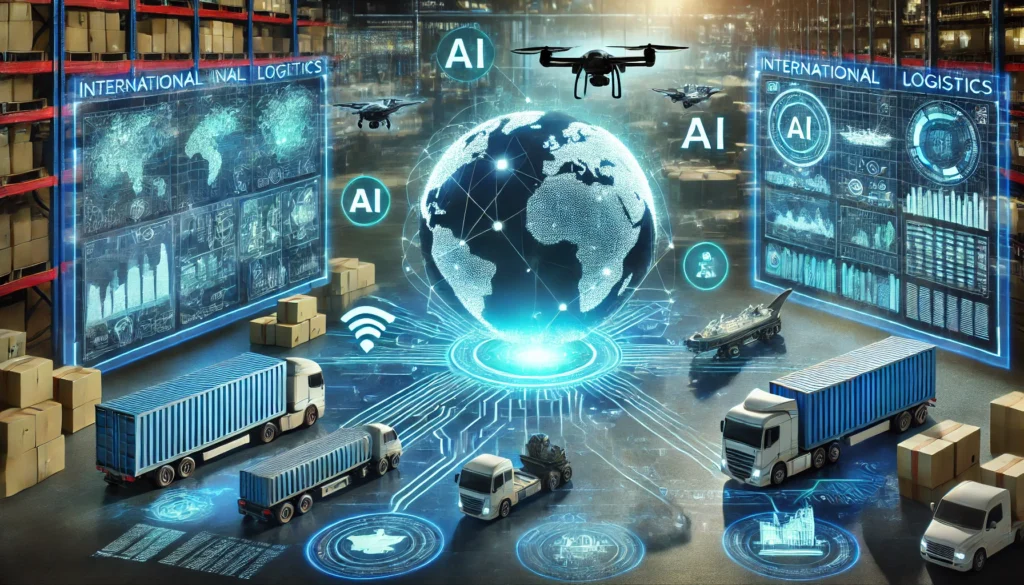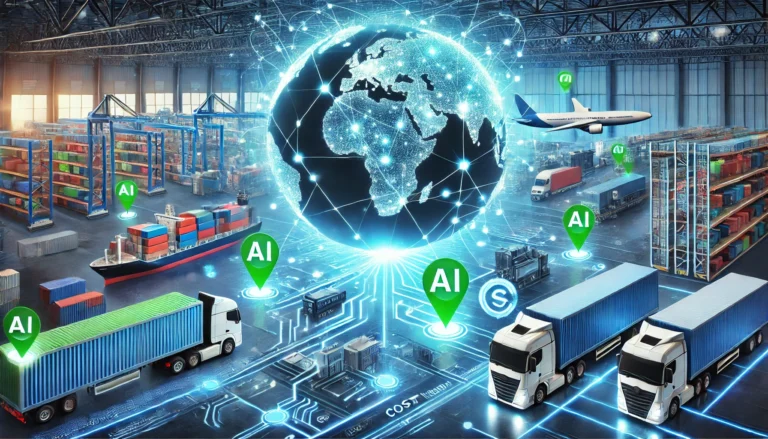In today globalized economy, international transport serves as the backbone of commerce, enabling goods to flow seamlessly across borders. However, managing the costs and complexities associated with cross-border logistics remains a challenge for businesses. Recent advancements in (AI) artificial intelligence offer innovative solutions to optimize rate advantages, streamline operations, and enhance overall efficiency in international transport.
Understanding Rate Challenges in International Transport
Before delving into AI-driven solutions, its essential to understand the common challenges associated with international transport rates:
- Dynamic Pricing: Freight rates fluctuate based on factors like fuel prices, seasonal demand, geopolitical events, and economic trends.
- Complex Fee Structures: Hidden charges such as customs duties, taxes, and surcharges often inflate overall costs.
- Market Fragmentation: The logistics industry is highly fragmented, with numerous carriers, brokers, and service providers offering varying rates.
- Lack of Transparency: Negotiating rates can be opaque, leaving shippers vulnerable to unfavorable terms.

AI Technologies Driving Rate Optimization
Several AI-powered tools and methodologies are transforming the landscape of international transport. Below are key technologies making an impact:
1. Predictive Analytics
AI algorithms analyze historical data, market trends, and external factors to forecast future rate changes. Predictive analytics enables businesses to:
- Anticipate peak pricing periods and plan shipments accordingly.
- Identify the best times to negotiate contracts or secure spot rates.
- Optimize inventory management by aligning production schedules with favorable transport rates.
2. Dynamic Pricing Models
AI can dynamically adjust pricing based on real-time market conditions. For example:
- Logistics platforms powered by AI can match shippers with carriers offering the best rates at any given time.
- Automated bidding systems use AI to negotiate competitive rates on behalf of shippers.
3. Intelligent Route Optimization
Efficient routing reduces costs and improves delivery times. AI-driven route optimization tools consider factors such as fuel prices, transit times, and geopolitical risks to:
- Suggest cost-effective shipping routes.
- Minimize delays and disruptions.
- Reduce carbon emissions, contributing to sustainability goals.
4. Natural Language Processing (NLP)
NLP enables AI systems to interpret and analyze contracts, invoices, and regulatory documents. This helps businesses:
- Identify discrepancies in pricing agreements.
- Ensure compliance with international trade regulations.
- Simplify negotiations by extracting key insights from complex documents.
5. Machine Learning for Demand Forecasting
Machine learning algorithms process vast amounts of data to predict demand fluctuations. This enables businesses to:
- Adjust shipping schedules to avoid peak congestion periods.
- Secure lower rates during off-peak seasons.
- Better align logistics strategies with market demands.
6. AI-Powered Freight Marketplaces
Online freight marketplaces equipped with AI match shippers with carriers more efficiently. These platforms:
- Provide instant rate comparisons from multiple providers.
- Offer real-time tracking and updates on shipment statuses.
- Enhance transparency, ensuring businesses receive fair pricing.
Steps to Implement AI in International Transport
- Assess Current Operations:
· Conduct a thorough audit of existing logistics processes and costs.
· Identify pain points and opportunities for improvement.
- Choose the Right AI Tools:
· Select AI solutions tailored to your specific needs, such as predictive analytics, route optimization, or freight marketplaces.
· Ensure compatibility with existing systems.
- Invest in Data Quality:
· Ensure accurate and comprehensive data collection from all stakeholders.
· Standardize data formats to facilitate seamless integration with AI tools.
- Train Your Team:
· Provide training for employees to effectively use AI tools.
· Foster a culture of innovation and adaptability.
- Monitor and Optimize:
· Continuously monitor the performance of AI systems.
· Refine algorithms and strategies based on real-world feedback.
Benefits of AI-Driven Rate Optimization
The adoption of AI in international transport delivers multiple benefits:
- Cost Savings: Businesses can secure competitive rates and reduce hidden fees.
- Efficiency Gains: Automation streamlines operations, saving time and resources.
- Improved Decision-Making: Data-driven insights empower smarter strategies.
- Enhanced Transparency: AI ensures clarity in pricing and contract terms.
- Sustainability: Optimized routes and schedules reduce environmental impact.
Challenges and Considerations
While AI offers significant advantages, businesses should be aware of potential challenges:
- Data Privacy and Security: Protecting sensitive information is crucial when using AI systems.
- High Initial Investment: Implementing AI solutions may require substantial upfront costs.
- Integration Complexity: Ensuring seamless integration with existing systems can be challenging.
- Resistance to Change: Employees and partners may be hesitant to adopt new technologies.
Here are some References related to case study
Case Study 1:
AI in Ocean Freight
A multinational retailer leveraged AI to analyze historical shipping data and predict seasonal rate fluctuations in ocean freight. By booking space in advance during low-demand periods, the company achieved cost savings of 15% annually.
Case Study 2:
AI-Powered Air Cargo Optimization
An e-commerce company used AI to dynamically allocate shipments between air and sea transport based on urgency and cost-efficiency. This strategy reduced overall shipping expenses by 20% while maintaining customer satisfaction.
Case Study 3:
Automated Negotiations in Road Freight
A manufacturing firm implemented an AI-driven bidding platform to negotiate rates with multiple trucking companies. The system’s ability to analyze market conditions and carrier performance led to a 10% reduction in road freight costs.
Conclusion
The AI technology into international transport is transforming the way businesses manage costs and secure rate advantages. From predictive analytics and dynamic pricing to intelligent route optimization and AI-powered marketplaces, these tools provide actionable insights and automation capabilities that drive efficiency and savings.
As the logistics industry continues to evolve, businesses that embrace AI will be better positioned to navigate the complexities of international transport, gaining a competitive edge in the global marketplace. By investing in the right technologies and strategies, companies can unlock the full potential of AI to optimize rates, enhance operations, and achieve long-term success.
For more interesting content, keep visiting our site: https://techvibezonline.com


